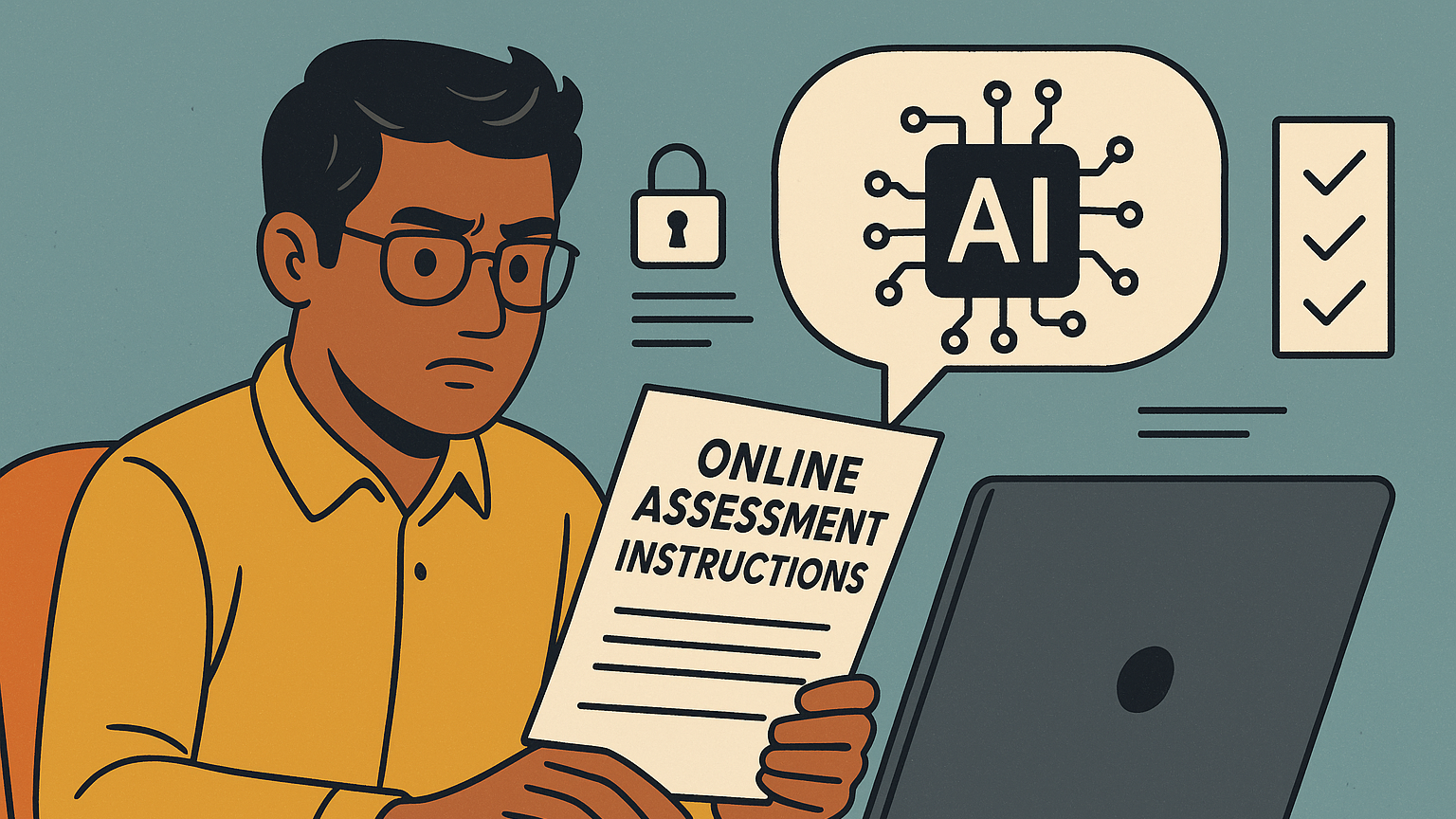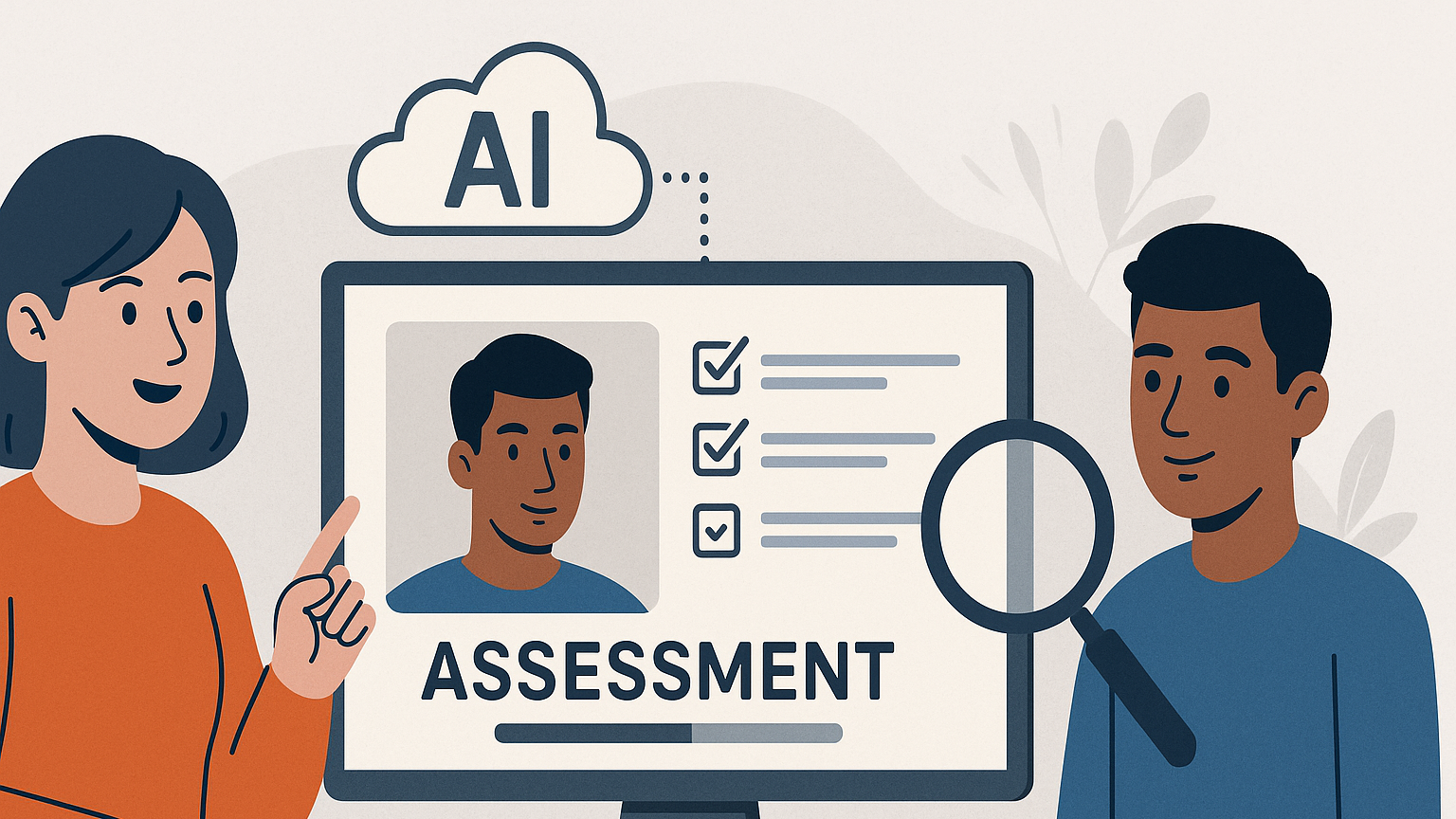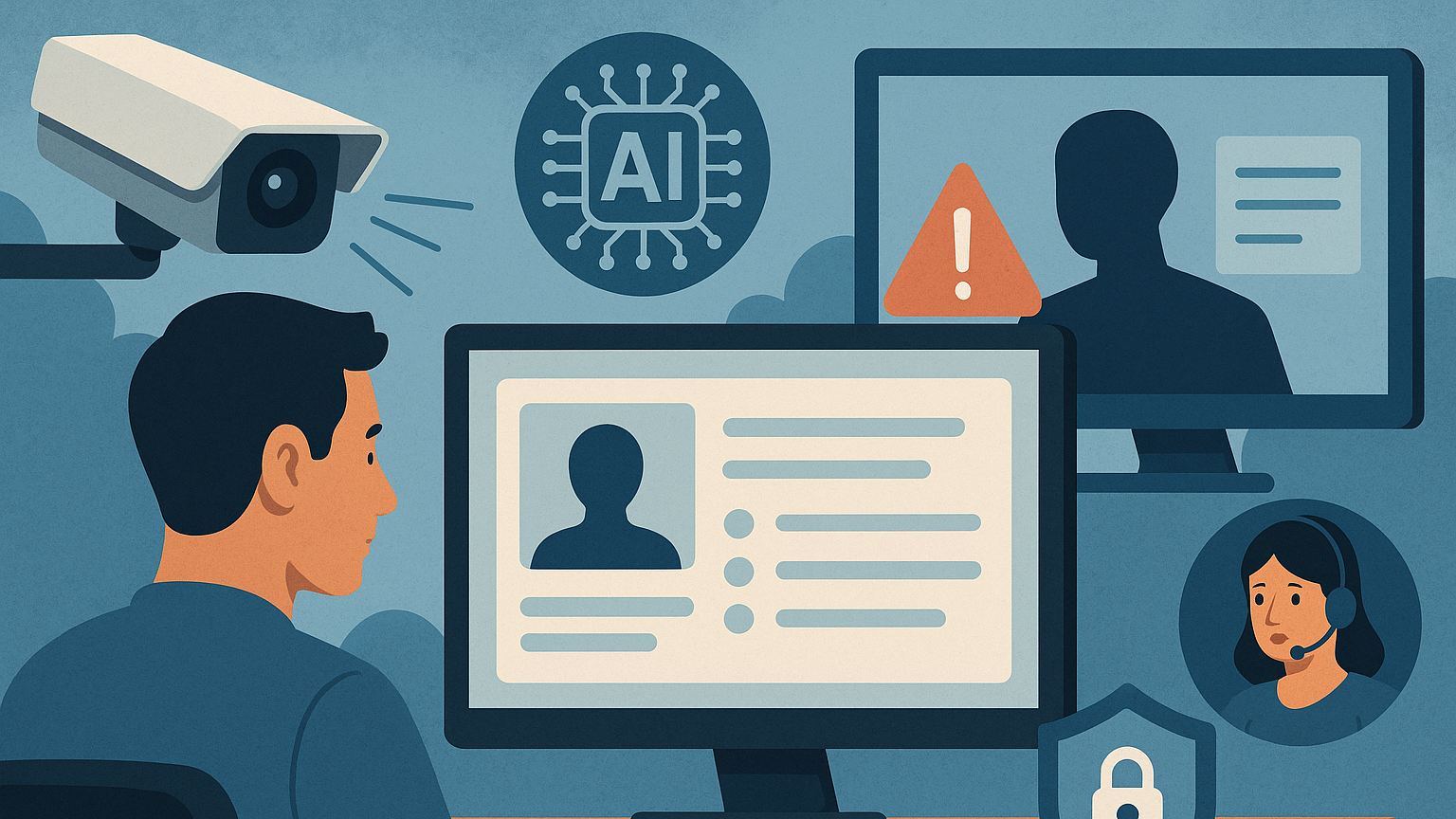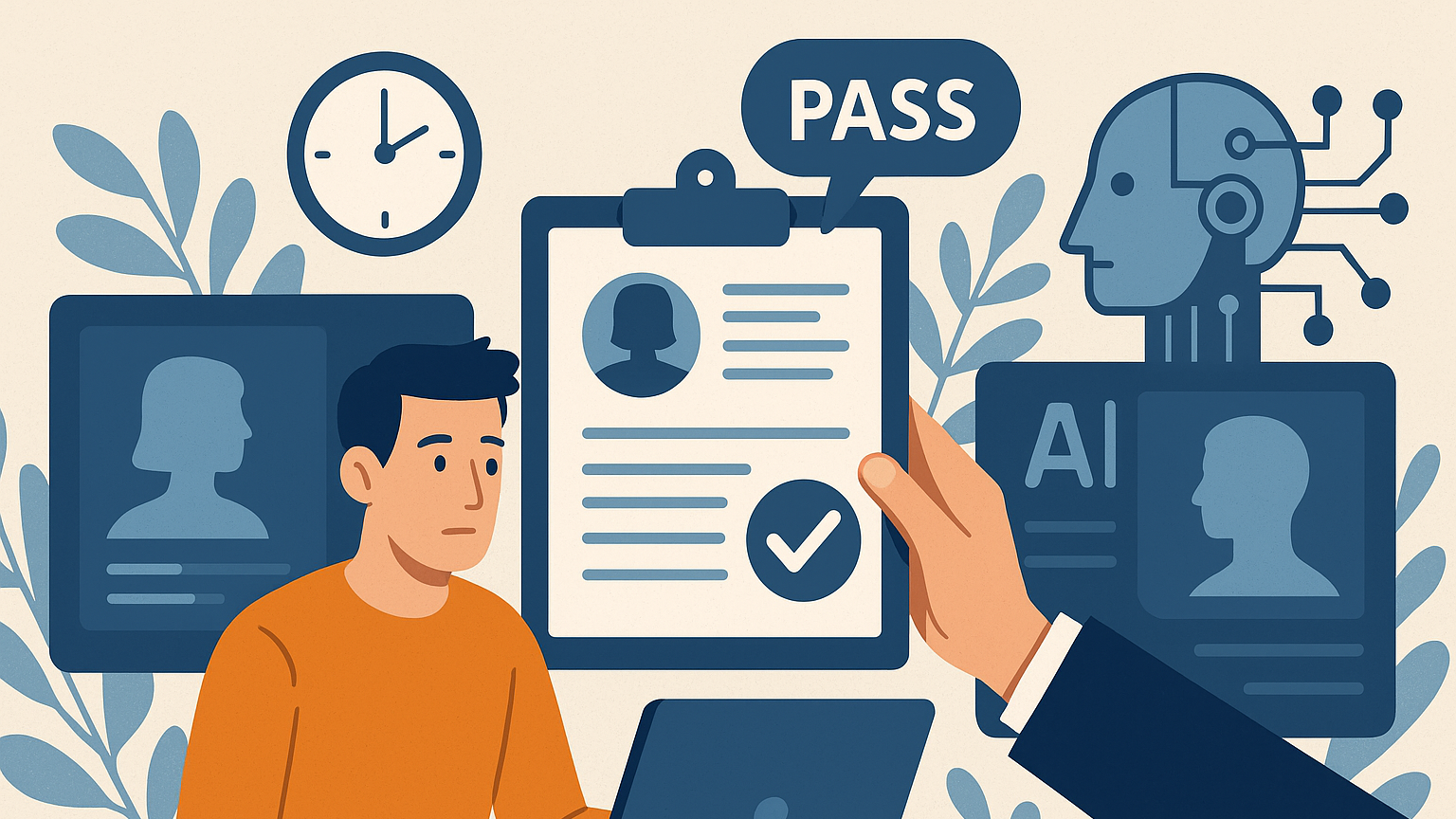Assessment and testing instructions for AI in Human Resources recruitment communication templates
You’re working in HR or recruiting and you want every assessment, test, and candidate interaction to be clear, fair, and efficient. As AI becomes a routine part of hiring — scoring assessments, analyzing interviews, or recommending next steps — the way you write and test recruitment communication templates matters more than ever. This article gives you practical, tested guidance on how to write candidate-facing assessment instructions powered by AI, and how to test and validate those templates internally so they do what you expect: drive completion, protect fairness, and support a positive candidate experience.

Why clear assessment and testing instructions matter
When candidates receive instructions that are concise and sensible, they’re more likely to complete assessments, show up punctually for interviews, and respond positively to your employer brand. Poorly written instructions cause confusion, increase attrition, and can introduce perceived bias or suspicion about your process. You need instructions that explain what will happen, why it’s relevant to the role, how long it will take, and how their data will be used. With AI in the loop, you also need to explain the role of AI, how decisions are made, and how you’re protecting privacy and fairness. Doing this well reduces friction and legal risk, and helps your AI systems produce better, more representative outcomes.

How AI changes recruitment communication templates
AI amplifies both the reach and the complexity of your communications. Templates that once simply contained logistics now need to describe algorithmic scoring, automated feedback, video-analysis, and proctoring processes. You’ll need to make machine-learning concepts accessible without oversimplifying them, balance transparency with proprietary needs, and ensure your wording doesn’t overpromise capabilities. You also have to consider how AI may influence candidate perceptions — it can improve consistency but may also create worry about fairness. Your templates must address these concerns in plain language and give candidates comfortable pathways for questions or appeals.
Core principles for creating effective AI-enabled assessment instructions
When you design your assessment communications, follow a few practical principles to keep them user-friendly and compliant. Keep language plain and job-relevant, state expectations and time clearly, describe how AI participates in the evaluation, provide technical requirements up front, and offer accessible options and contact points for assistance. These principles help you maintain candidate trust, reduce avoidable candidate drop-out, and meet compliance expectations where required.
Candidate-facing instructions: tone, clarity, and transparency
You should write as if you’re guiding a colleague through a one-time task. Friendly, direct language works best: explain the assessment’s purpose, format, length, and how it ties to the job. Don’t bury critical details in legalese or long paragraphs. Where AI is involved, a short, plain-language explanation about what the AI does and what human oversight you apply will reassure most candidates. Transparency reduces anxiety and encourages candid participation.

Preparing candidate-facing instructions: explain purpose and relevance
Start every instruction set by explaining what the assessment measures and why it matters to the role. Candidates respond better when they understand relevance. For example, explain that a situational judgment test measures decision-making in job-like scenarios, or that a coding challenge evaluates problem-solving and style. Keep this explanation to a sentence or two, and tie it to a real job task so the candidate sees direct value in participating.
Preparing candidate-facing instructions: describe the test format and timing
Be explicit about the number of sections, question types, and expected time to complete. If the assessment has a strict time limit, say so. If it’s untimed but expected to take 45 minutes, tell them. If there are breaks, or if you score partial completion, make that clear. Candidates appreciate predictability, and precise timing guidance reduces unnecessary stress and technical support requests.
Preparing candidate-facing instructions: technical requirements and environment
Tell candidates what device, browser, or bandwidth they need, and whether headphones or a quiet environment are recommended. If the assessment works only on a desktop browser and not on phones, say so. If a recording will be made, explain file types and size limits. List instructions for preparing their environment, such as closing unnecessary applications and ensuring a stable internet connection. This reduces test cancellations and help-desk tickets.
Preparing candidate-facing instructions: security, proctoring, and privacy
If you use live or automated proctoring, describe what will be recorded (screen, webcam, audio), for how long, and why. Explain who will see the recordings, how they’re stored, and how long they’re retained. If behavior may be flagged by AI (e.g., suspicious activity), explain the review process and the opportunity for human appeal. Detailed but accessible privacy information reassures candidates and reduces disputes later.

Preparing candidate-facing instructions: accessibility and accommodations
Make it simple for candidates to request accommodations. Offer clear contact details and a short timeline for requesting adjustments. Describe alternative formats available, such as screen-reader compatible versions, extended time, or offline evaluation. If your AI models have been validated for accessibility, say so. This signals inclusivity and ensures you’re not unintentionally screening out qualified candidates.
Preparing candidate-facing instructions: privacy and data use
Explain, in plain language, what candidate data you collect during the assessment and how you use it. If AI uses the data to make scoring decisions or to train models, disclose that and provide an opt-in path if required by law. Tell candidates how long you’ll retain test data and how to contact you with questions. Transparency about data builds trust and helps you remain compliant with privacy laws.
Preparing candidate-facing instructions: scoring, feedback, and next steps
Candidates want to know what happens after they finish. Tell them whether they’ll receive feedback, the type of feedback (pass/fail, numerical score, or general suggestions), and the approximate timeline for results. If AI is used for initial screening and humans make final hiring decisions, tell them. Explaining the pipeline gives candidates realistic expectations and reduces confusion or frustrated inquiries.

Preparing candidate-facing instructions: appeals, retests, and technical failures
You should define how candidates can appeal if they think something went wrong and whether they can retake an assessment. Provide instructions for reporting technical issues and a contact path for urgent problems during the test. Clarify your policy on retesting after technical interruptions and whether exceptions are handled case-by-case. This helps candidates feel supported and reduces reputational risk.
Sample candidate instruction: short email for an online skills test
You can use a short, friendly format for routine skills tests. Start by welcoming the candidate, summarizing the test purpose, and listing the essentials: estimated time, device requirements, default browser, and what to do if they encounter problems. End with contact information and a link to detailed instructions. This compact format works well for high-volume roles where clarity and speed are essential.
Example (short, friendly tone):
You’ll receive an invitation to complete a 45-minute skills assessment that evaluates role-related problem solving. Please use a desktop or laptop with Google Chrome and a stable internet connection. The test is untimed per question but the typical completion time is 45 minutes. If you experience a technical issue, please contact [email protected] within 24 hours so we can help. Results are delivered within five business days.
Sample candidate instruction: detailed cognitive ability or personality test
For longer or higher-stakes assessments, provide a fuller guide that includes example questions, clear timing, and an explanation of how AI is used. Describe the scoring approach and how results influence hiring decisions. Offer accommodations and technical tips. A detailed page reduces anxiety and helps the candidate prepare.
Example (detailed, supportive tone):
This assessment measures reasoning and problem-solving relevant to the role. It contains three sections: verbal reasoning (20 questions, 25 minutes), numerical reasoning (15 questions, 30 minutes), and a short situational judgment section (10 scenarios, 20 minutes). You’ll work in a browser-based environment that saves your responses continuously. The test is scored using validated item-response models and an AI-assisted scoring engine; a human review is applied in borderline cases. If you need an accommodation, email [email protected] at least 72 hours before your scheduled test.
Sample candidate instruction: proctored video interview guided by AI
Video interviews require more nuanced instructions because candidates worry about privacy and AI judgment. Explain camera and lighting tips, what the AI analyzes (e.g., voice clarity, language used, answers to situational prompts), and the human oversight in place. Offer practice runs and explain the review timeline.
Example (reassuring, transparent tone):
This is a recorded video interview consisting of five prompts; you’ll have 30 seconds to prepare each answer and up to two minutes to respond. The system records your video and audio and uses AI to transcribe and identify job-relevant competencies. A trained reviewer will inspect AI flags before any hiring decision is made. Please choose a quiet, well-lit space and use a stable device. You can practice one free sample question before starting.
How you should test AI-generated recruitment templates internally
Before you send any AI-generated communication to candidates, test them internally. Start with clarity testing: have non-HR colleagues read the messages and perform the assessment, then capture confusion points. Use scenario testing: simulate edge cases like slow internet or device changes. Conduct legal and privacy reviews and a bias-impact assessment. You must ensure your messages are accurate, accessible, and truthful before they reach candidates.
Define internal test goals and success metrics
When you test templates, decide what success looks like. Are you measuring candidate completion rates, readability, reduced support tickets, or improved candidate satisfaction? Define KPIs up front and run tests with enough participants to produce meaningful signals. Tracking baseline performance before making changes helps you understand the real impact of AI-driven wording or procedural adjustments.

Simulate the candidate experience and conduct usability testing
Have staff or a recruited pool of testers follow every step of your candidate journey, not just the email. They should receive the invitation, click links, complete the assessment, experience proctoring, and request accommodations. Capture time logs, confusion points, and emotional reactions. Usability testing reveals real problems that static review will miss and gives you concrete suggestions for improvement.
Quality assurance checklist for communications
Your template QA should include checks for accuracy, clarity, technology links, privacy statements, and compliance language. Verify that links load correctly, time zones are accurate, and attachments open. Confirm that your compensating phrasing for AI usage is consistent across messages. This kind of checklist reduces embarrassing mistakes and candidate frustration.
Quick checklist (minimal):
- Is the test duration and format clear?
- Are technical requirements accurate?
- Is AI usage described transparently?
- Are contact and accommodation instructions present?
Bias and fairness testing for candidate communications and assessments
Assessments and the messages that accompany them can influence who participates and how they perform. Test whether your wording or technical requirements disproportionately discourage segments of candidates—non-native speakers, people with disabilities, or those with limited technology access. You should run simulated demographic analyses and monitor selection rates. If you find disparate impact you’ll need to adjust both the assessment and the communication to reduce exclusion.
Accessibility testing and inclusive language review
Run your templates through accessibility tools and human reviewers who use screen readers and assistive technologies. Make sure your language is plain, that alternative versions are available, and that contact methods for accommodations are obvious. Small changes — like offering document downloads in multiple formats and avoiding idioms — can make your recruiting process more inclusive.
A/B testing and measuring communication effectiveness
A/B tests let you compare different subject lines, instruction lengths, or explanations of AI usage. Randomize candidate pools and monitor completion, time-to-complete, drop-off rate, and candidate satisfaction. Use statistical confidence thresholds to validate differences and iterate on what works. Over time, your data-driven templates will consistently outperform ad-hoc messages.
Logging, monitoring, and versioning of templates
Maintain version control for templates and log the dates when changes were made. Keep records of which candidates received which version, so you can investigate issues and measure performance differences over time. Logging is also essential for regulatory audits and for tracing back candidate complaints to specific language.
Human-in-the-loop checks and escalation paths
Since AI may occasionally generate inaccurate or concerning evaluations, design an explicit path for human review and candidate escalation. Make this process visible in your communications—tell candidates who will review flagged content and how long appeals take. Having a human-in-the-loop process preserves fairness and improves candidate trust.
Technical tests for AI systems used in assessments
Your AI models must be validated for reliability and robustness. Run tests for predictive validity (how well scores predict job performance), stability under small input changes, and resilience to adversarial behaviors. Validate models on representative samples reflecting the diversity of your applicant pool. Document data provenance and model training details to support governance and compliance.
Performance validation and continuous monitoring
Model validation isn’t a one-time activity. Put telemetry in place to monitor score distributions, demographic performance, and drift over time. Build alerts for unusual patterns, such as sudden shifts in pass rates or changes in completion times that could signal technical problems or candidate misunderstandings. Continuous monitoring helps you catch and correct problems before they escalate.
Explainability and documentation for candidate-facing AI
You should be able to explain, in simple terms, why an AI system made a decision and how the candidate can contest it. Keep internal documentation that links parts of the AI pipeline to candidate-facing language so your explanations are accurate. This documentation also helps your legal team and external auditors understand your processes.
Sample internal test script for QA teams
An internal test script helps standardize reviews. Include steps for verifying links, clicking through the candidate journey, submitting a sample assessment, testing proctoring flows, and validating automated emails. Have test accounts across different device types and networks. Record every result and unexpected behavior to feed back into template edits.
Measuring candidate outcomes and communication effectiveness
Track metrics like invite-to-start rate, start-to-complete rate, average completion time, candidate satisfaction (via short post-test surveys), and percentage of candidates requesting assistance or accommodations. Also monitor longer-term hiring metrics: offer acceptance, time-to-hire, and quality-of-hire as inferred from later performance metrics. You’ll tie communication improvements to business outcomes by linking these datasets carefully.
Iterating templates based on data and feedback
Use A/B testing, candidate surveys, and help-desk logs to produce prioritized improvements. Apply an iterative cadence — for example, monthly template review cycles — and make small, measurable changes rather than sweeping rewrites. Keep stakeholders informed and create a feedback loop that includes recruiters, hiring managers, legal, and candidate experience leads.
Handling errors, miscommunications, and candidate support
No process is flawless. Prepare template-based error-handling messages for common problems: technical failures, accidental resubmissions, or misrouted invites. Ensure candidate support is empathetic and fast. For high-stakes errors, escalate to a senior recruiter or hiring manager and offer clear remediation, such as a retest or direct phone support. These proactive steps preserve relationships and employer brand.
Legal, ethical, and privacy considerations you must address
Ensure your communications reflect legal requirements in the jurisdictions where you hire. This includes data protection laws like GDPR, disclosure obligations, and anti-discrimination rules. If you use automated decision-making in a way that has legal effects, provide the required notices and options. Work closely with legal counsel to translate legal requirements into candidate-friendly language that still meets compliance obligations.
Accessibility and inclusivity best practices you should adopt
Use plain language, avoid jargon, provide alternative formats, and offer translation if you recruit internationally. Make timing flexible for candidates who need it, and provide multiple ways to request help. These practices reduce bias, expand your talent pool, and improve candidate satisfaction.
Pro tips for business leaders and HR managers
Set clear ownership for template maintenance and measurement. Keep a regular audit schedule and require that any AI changes go through a documented testing pipeline. Invest in analytics that tie candidate communications to business outcomes, and prioritize initial human review for any AI scoring that materially affects hiring decisions. These steps protect your brand and ensure the technology augments your team rather than creating hidden risk.
Checklist summary before launching AI-based assessments and communications
Before you go live, confirm you’ve validated the assessment’s job relevance, that candidate instructions are crystal clear, accessibility options exist, data practices are transparent, human oversight processes are documented, logs and versioning are in place, and legal has reviewed all candidate-facing language. This final check will save time and reduce candidate friction after launch.
Sample templates and copy blocks you can adapt
Below are short candidate-facing templates you can adapt. They are written in a friendly second-person voice and tuned to different assessment types.
-
Short assessment invitation:
Hi [Name], you’ve been invited to complete a 30–45 minute role-relevant assessment for [Job Title]. It’s best completed on a laptop or desktop using Google Chrome. Expect scenario-based questions and multiple-choice items. If you need help, email [email protected]. You’ll receive results within five business days. -
Detailed proctored test instruction:
Hello [Name], thank you for proceeding to the assessment stage. You’ll complete a proctored test that records your webcam and screen to ensure exam integrity. The test has three sections and takes about 75 minutes. Please use a quiet, well-lit space. Data is stored securely for 12 months and reviewed only when necessary. If you need an accommodation, please contact [email protected] at least 72 hours in advance. -
Video interview invitation:
Hi [Name], please record answers to five interview prompts. Each prompt gives you 30 seconds to prepare and up to two minutes to answer. The system records audio and video, transcribes your answers, and applies AI-assisted scoring that is reviewed by recruiters. You’ll be able to preview a practice question before the real interview. Need support? Reply to this email. -
Retest and appeals notice:
If technical issues prevent you from completing a scheduled assessment, we will investigate and may offer a retest. Please submit a help ticket within 24 hours with screenshots or a description of the issue. For score disputes, request a manual review by emailing [email protected]. We aim to respond within five business days.
Future trends to watch in AI-enabled recruitment communications
Expect greater regulatory scrutiny, improved explainability tools, and more automated, interactive candidate support. Synthetic content generation will power personalized candidate journeys, making testing and QA even more important. You should monitor model governance developments and invest in explainable AI techniques to keep your processes trustworthy and defensible.
Conclusion
You’re operating in a time when AI can boost productivity and candidate reach, but only if your communication templates are clear, fair, and well-tested. Write in plain language, be transparent about AI’s role, validate the technology on representative samples, and continuously measure your communication outcomes. With the right combination of candidate-first messaging and rigorous internal testing, you’ll reduce drop-offs, improve quality of hire, and protect your employer brand.
If you found this article helpful, please clap, leave a comment, and subscribe to my Medium newsletter for updates and more practical guides about AI in HR.
